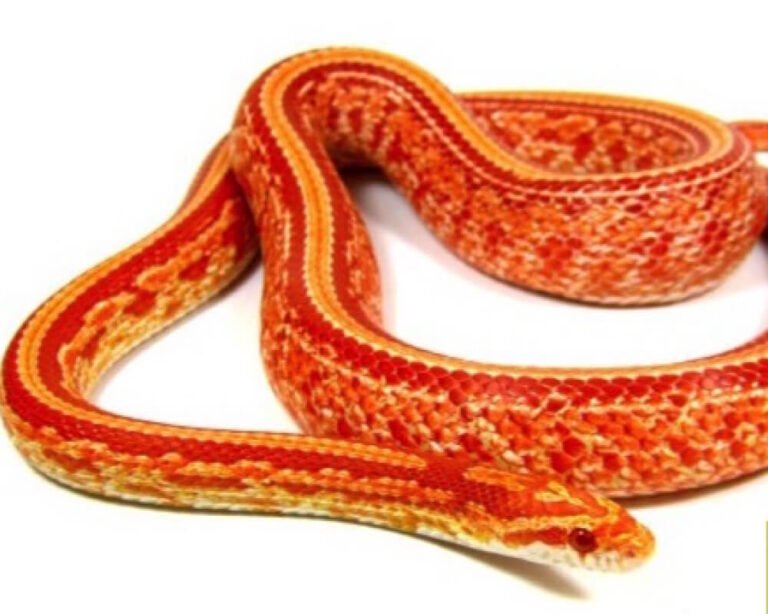
In our first article on exotic reptile and amphibian animals we looked at the habitat, feeding and maintenance of the Leopard Gecko as reported in Pet Sitter’s World Magazine by Pet Sitters International. It was also pointed out that the Leopard Gecko is one of the three most popular herptile pets in the United States today, with the Corn Snake and Russian Tortoise being the other two. Today’s article focuses on snakes. Again, if these types of pets make you squeamish, then you may want to wait for a future installment on creatures of a more warm and fuzzy nature.
As previously mentioned, even though dogs and cats are some of the most common pets today in society, many people prefer the company that exotic animals like lizards, snakes and tortoises offer as pets. Exotic pets make great companion animals especially in places where space is a premium and furry animals (e.g., dogs and cats) are not allowed, like apartments. Moreover, the hypoallergenic nature of reptiles and amphibians provide a viable alternative for animal lovers allergic to cat and/or dog dandruff. Today’s article on snakes focuses on the following topics:
- Habitat
- Temperature
- Water
- Substrate
- Hide Box
- Tank Size
- Feeding
- Diet
- Maintenance
- Cleaning
- Shedding
- Handling
- Problems
- Sample Tank
Habitat
Temperature
Snakes should be kept in a cage/tank that provides both cool and warm options. North American and temperate climate snakes should have a cool end of 75° F and a hot end of 85° F. Tropical and desert snakes should have cool and hot cage/tank ends of 80° F and 90° F respectively. All temperature readings should be taken on the cage/tank floor as opposed to the cage/tank wall.
Water
Fresh water should be available at all times. The water bowl should be placed on the cool side of the cage/tank and should be large enough for the snake to achieve full immersion.
Substrate
Screened pine or aspen is appropriate for the bottom of the cage/tank. Avoid aromatic woods like cedar. Moisture holding substrates like coconut husk can work well with some tropical snakes.
Hide Box
Provide a warm dark place made out of cork bark, domed logs or other reptile products for your snake to hide. A “moss box” made from Tupperware with moist moss placed inside is recommended for tropical or other snakes with shedding issues.
Tank Size
A 10-15 gallon cage/tank is adequate for most baby and larger snakes.
Feeding
Diet
A snake’s diet consists primarily of rodents. Most baby snakes eat “pinky mice” (1-10 days old) with the size of their food increasing proportionately as the snake matures. Snake food items should be 80-100% the diameter of the widest part of the snake’s body. It is not uncommon for baby snakes to consume anything larger than an adult mouse. No vitamin supplements are required as rodents are a complete source of nutrition. Please note that sometimes baby snakes are picky eaters. If your snake has problems taking food off the bottom of the cage/tank, try dangling the food in front of it with tongs. If your snake still won’t eat, place it and the food overnight in a small sealed paper bag on the cool side of the cage/tank (no weaned prey). This provides a secure distraction free eating environment. Once your snake is eating food with open eyes and teeth, it is recommended to feed frozen/thawed food to avoid risk of injury to the snake.
Maintenance
Cleaning
Spot clean the cage/tank once per week. Clean out the entire cage/tank at least once per month or as needed.
Shedding
Baby snakes should shed their skin about once a month. Older snakes shed less frequently. Make sure your snake is well hydrated when it is in the process of shedding. A soak is beneficial.
Handling
DO NOT handle a snake for the first few days after you get it. Make sure your snake is comfortable eating first and always allow at least 24 hours after it eats before handling. Following the first few days, more frequent handling is fine.
Problems
Lack of appetite is the first sign of a problem. If your snake stops eating, do not handle it, check the habitat temperature and contact a herptile veterinarian.
Sample Tank
Add a heating lamp to the hot end of the cage/tank to supplement the heat if you are unable to achieve the desired temperature. If using a thermostat, be sure to place the probe on the cold side of the cage/tank and set it for the cold-side temperature.

Our next article on exotic animals will focus on the habitat, feeding and maintenance of tortoises.

